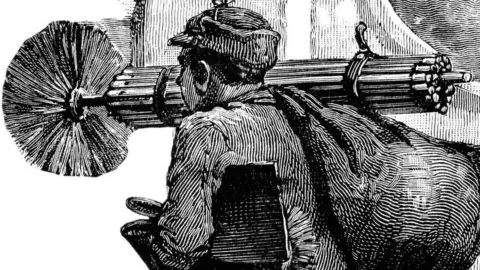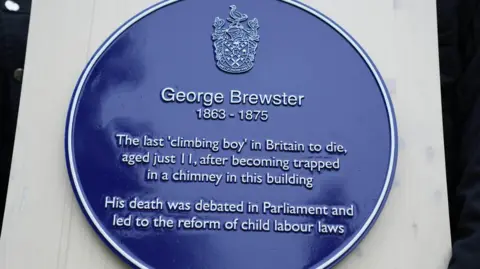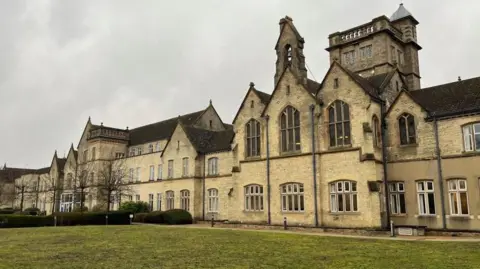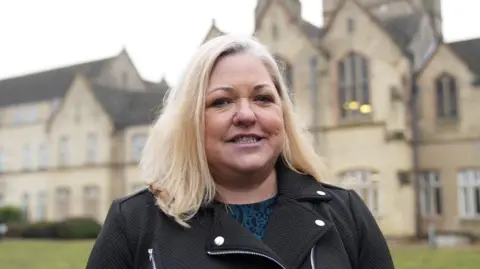Blue plaque unveiled to honour boy chimney sweep
 Getty Images
Getty ImagesA blue plaque to commemorate a Victorian child chimney sweep has been unveiled at the place of his death.
George Brewster, 11, became trapped in the chimney of a former pauper asylum at Victoria Park in Fulbourn, Cambridgeshire, in 1875, and could not be saved.
He is thought to be the last of what were known as "climbing boys" to have died in England - and the youngest recipient of a blue plaque.
His story was brought to light by amateur historian Joanna Hudson, who said seeing the plaque unveiled was "an amazing feeling, it's been such a long time in the planning".
She added: "Today is the 150th anniversary of his death and it was so important that we hit that anniversary, so I am so pleased."
George's death that year prompted a new law stopping children from being used as chimney sweeps.
 John Fairhall/BBC
John Fairhall/BBCGeorge was apparently "forced by his master" to climb and clean the narrow chimney of the building, according to Ms Hudson, who has campaigned for years for recognition of his legacy.
He was unable to get out and 15 minutes later a wall was pulled down to get to him but he died shortly after.
The 7th Earl of Shaftesbury read about his death and pushed a bill through Parliament putting an end to children being used as chimney sweeps.
Ms Hudson, from Pampisford, Cambridgeshire, said George's death was also part of a much greater transformation of British industrial society, that heralded the end of all child labour practices in other industries such as farming, mining and in factories.
Just a year later, in 1876, it was recommended that education be made compulsory in the UK for all children, before being fully enforced in 1880.
 Tom Jackson/BBC
Tom Jackson/BBCAfter the plaque was unveiled in Victoria Park where George died, Ms Hudson said: "He was the catalyst for the change in the child labour law.
"It was his legacy that he got this blue plaque and we really want to use this to get his name out there so that all children today know about George Brewster."
 John Fairhall/BBC
John Fairhall/BBCLawson Wright, chair of the Guild of Master Chimney Sweeps, who was also present at the unveiling, said: "Nowadays sweeps have all the access to protective equipment we could need and if they have to work inside a chimney they are properly set up with breathing equipment - so we're all very well protected."
Ms Hudson said she had checked with both English Heritage and Historic England and neither were aware of a child as young as George being honoured with a blue plaque.
She said she would like to move forward with the idea of a permanent memorial to George in Cambridge, where he lived.
Follow Cambridgeshire news on BBC Sounds, Facebook, Instagram and X.
